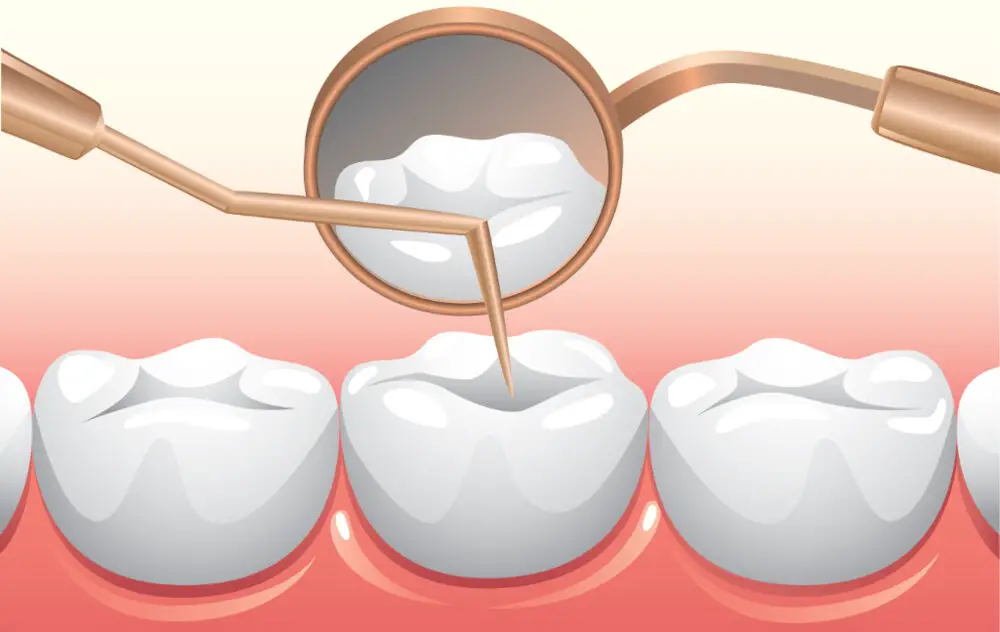Why Teeth Chatter When We Cry: Understanding the Physiology Behind Emotional Tremors

Crying is a natural response to a range of emotions, from sadness and grief to joy and relief. Whether we shed tears of joy or sorrow, our bodies undergo a range of physical changes during this emotional release, including the phenomenon of teeth chattering. This involuntary movement of the jaw, which can occur during crying or even in response to extreme cold, has long puzzled scientists and psychologists alike. But what is the physiology behind this curious phenomenon, and what can it tell us about the complex relationship between our emotions and our bodies?To understand the physiology behind teeth chattering during crying, we must first explore the complex interplay between our emotional and physical responses. When we experience intense emotions, our bodies undergo a range of physiological changes, from increased heart rate and blood pressure to the release of hormones like cortisol and adrenaline. These changes can trigger a range of physical responses, including trembling, sweating, and even teeth chattering. By delving deeper into the science behind these emotional tremors, we can gain a better understanding of how our bodies respond to stress and emotional arousal, and how we can learn to manage these responses in a healthy and effective way.
Understanding emotional tremors

Emotional tremors are an involuntary physical response to emotional experiences. They can manifest in a variety of ways, including shaking, teeth chattering, or muscle tension. These tremors occur when the sympathetic nervous system is activated, triggering a release of adrenaline and other stress hormones. This bodily response is commonly referred to as the \fight or flight\ response and is a survival mechanism that prepares the body to respond to perceived threats. While emotional tremors can be uncomfortable and even embarrassing, they are a natural and healthy response to strong emotional experiences. In fact, suppressing these physical responses can actually be detrimental to our mental and physical health. Allowing ourselves to fully experience and express our emotions can help us process and cope with difficult situations. By acknowledging and accepting our emotional tremors, we can learn to regulate our responses and develop a greater sense of emotional resilience. In short, emotional tremors are a normal and important part of our body’s response to stress and emotional experiences.
Emotional tremors are involuntary movements or vibrations of the body that occur in response to intense emotions, such as fear, anxiety, or sadness. These tremors can affect different parts of the body, including the hands, legs, voice, and even the teeth. Emotional tremors are caused by the activation of the sympathetic nervous system, which triggers the release of adrenaline and other stress hormones in response to perceived threats or challenges. These hormones cause muscles to contract and vibrate, leading to the characteristic shaking or trembling that is often associated with emotional states. While emotional tremors can be unsettling or uncomfortable, they are a natural response to intense emotions and are not usually a cause for concern.
Emotional tremors, also known as shivers, chills or goosebumps, are physical reactions that occur in response to various emotional stimuli. There are several types of emotional tremors, including those caused by fear, excitement, nostalgia, and sadness. Fear-induced tremors are often associated with a rapid heartbeat and increased perspiration, while excitement-induced tremors are characterized by a surge of adrenaline and a sense of euphoria. Nostalgia-induced tremors can be triggered by memories or experiences that evoke a sense of longing or wistfulness, while sadness-induced tremors are usually accompanied by tears and a profound sense of loss. In all cases, emotional tremors are a natural physiological response to intense emotional states, and they serve as a reminder of the profound impact that our emotions can have on our bodies and minds.
Emotional tremors, also known as shaking or quivering, are physical manifestations of intense emotional states such as fear, anxiety, or grief. There are various causes of emotional tremors, including the activation of the sympathetic nervous system, which triggers the fight-or-flight response. This response causes the release of adrenaline, which can increase heart rate, blood pressure, and muscle tension, leading to tremors. Additionally, emotional tremors may be a result of the body’s attempt to release excess energy and tension, which accumulates during periods of heightened emotions. Other potential factors include hormonal changes, medication side effects, and neurological conditions. Overall, emotional tremors are a natural physiological response to intense emotions and can be managed through relaxation techniques, mindfulness, and therapy.
Why teeth chatter when we cry

When we cry, our body goes through a range of responses that can be both emotional and physical. One of the common physical responses is teeth chattering, also known as emotional tremors. This phenomenon occurs due to the activation of the sympathetic nervous system, which triggers the release of adrenaline and noradrenaline hormones in response to stress and emotional overload. The hormones cause the muscles around the jaw to contract and relax rapidly, resulting in the teeth chattering sound. Teeth chattering is a form of shivering that helps the body to generate heat and regulate temperature, as well as release tension and stress. Apart from being a physical response to stress and emotional overload, teeth chattering can also be a sign of underlying health conditions. People with Parkinson’s disease or tremors may experience teeth chattering as a symptom of their condition. Similarly, individuals who have anxiety disorders or panic attacks may also experience teeth chattering as a symptom. Understanding the physiology behind teeth chattering can help individuals to identify the root cause of their emotional tremors and seek appropriate treatment. It is important to seek medical advice if teeth chattering becomes frequent or severe, as it may indicate an underlying health condition that needs attention.
The sympathetic nervous system plays a crucial role in initiating the body’s response to stress and danger. When faced with a perceived threat, the sympathetic nervous system activates the \fight or flight\ response, releasing hormones such as adrenaline and noradrenaline. This response causes a variety of physiological changes, including increased heart rate, rapid breathing, and muscle tension. In the context of emotional tremors, the sympathetic nervous system is responsible for the physical manifestations of intense emotions, such as trembling, shaking, and teeth chattering. These responses are a natural part of the body’s way of dealing with emotional stress, and can be useful in helping us cope with challenging situations.
Adrenaline, also known as epinephrine, is a hormone that is released by the adrenal glands in response to stress or danger. When released, it triggers a \fight or flight\ response in the body, which prepares the body to react quickly and effectively to the perceived threat. Adrenaline causes the heart rate to increase, blood vessels to constrict, and airways to dilate, allowing for increased oxygen flow to the muscles. This surge of energy can also cause trembling or shaking, which can be seen in emotional tremors such as teeth chattering during crying. While adrenaline is essential for survival, chronic stress or anxiety can cause an overproduction of this hormone, leading to negative health effects such as high blood pressure and increased risk of heart disease.
Teeth chattering is a common physiological response that occurs when our body temperature drops below the normal range. The vibration of the teeth produces heat, which helps to regulate body temperature in extreme cold conditions. However, teeth chattering can also be a response to emotional stress and anxiety. When we cry, our body releases stress hormones that cause our muscles to tense up and contract, leading to tremors and shivers. Teeth chattering is one of the ways our body reacts to these emotional tremors. While it may be uncomfortable, it is a natural response that helps us cope with the physical and emotional stress of crying.
Other physiological responses to emotional tremors

In addition to teeth chattering, there are other physiological responses that occur when we experience emotional tremors. One of these responses is our heart rate increasing. When we become emotionally overwhelmed, our body goes into a fight or flight response, causing our heart rate to increase. This is due to the release of adrenaline and cortisol hormones that prepare our body for action. Our breathing also becomes more rapid and shallow as our body attempts to get more oxygen to our muscles. These physiological responses are all part of our body’s natural response to stress and can be helpful in a dangerous situation. However, in emotional situations, they can be overwhelming and cause uncomfortable physical symptoms. Another physiological response to emotional tremors is sweating. When we are emotionally stressed, our body temperature rises, causing us to sweat. This is another way our body attempts to regulate our internal temperature and cool us down. However, excessive sweating can be embarrassing and uncomfortable, especially in public situations. Additionally, emotional stress can also cause our digestive system to slow down, leading to stomach discomfort and even nausea. These physical symptoms can add to the overall discomfort of an emotional tremor, making it even more challenging to manage. Understanding these physiological responses can help us better cope with emotional stress and find ways to minimize their impact on our daily lives.
Shaking or trembling, also known as emotional tremors, is a physiological response to intense emotions such as fear, anxiety, or sadness. The body’s sympathetic nervous system triggers the release of adrenaline, which causes the muscles to contract and relax rapidly, leading to involuntary shaking. Teeth chattering, a common symptom of shaking, occurs when the muscles in the jaw and face contract rapidly. Emotional tremors can also cause the body to feel cold or hot, and the heart rate and breathing to become rapid. While shaking is a normal response to intense emotions, chronic or excessive shaking can be a sign of an underlying medical condition and should be evaluated by a healthcare professional.
Sweating is a natural bodily response to regulate temperature and maintain homeostasis. When we sweat, the moisture on our skin evaporates, cooling us down. The process is controlled by the sympathetic nervous system, which is responsible for our \fight or flight\ response. Emotional stress can also trigger sweating, as the body prepares for potential physical activity. However, excessive sweating can be a sign of underlying medical conditions or medication side effects. In some cases, sweating can be so severe that it interferes with daily activities and quality of life. It’s important to consult a healthcare professional if you have concerns about excessive sweating.
Increased heart rate is a common physiological response to emotional arousal, such as fear, excitement, or sadness. When we experience an intense emotion, our sympathetic nervous system is activated, causing a cascade of physiological changes in our body, including an increase in heart rate and blood pressure. These changes are designed to prepare us for action, whether it is to fight, flee, or freeze. While an increased heart rate can be a normal response to emotional stimulation, it can also be a sign of underlying health issues, such as anxiety or cardiovascular disease. Therefore, it is essential to pay attention to our body’s signals and seek medical attention if necessary.
How to manage emotional tremors

Emotional tremors are a natural and common response to intense emotions such as fear, anxiety, or sadness. These tremors usually manifest in the form of shaking or trembling in the body, which can be both physically and emotionally exhausting. However, there are several techniques that can help us manage these tremors and regain control over our emotions. One effective way to manage emotional tremors is through deep breathing exercises. By focusing on our breath and taking slow, deep breaths, we can calm our nervous system and reduce the intensity of our emotions. Another technique is progressive muscle relaxation, which involves tensing and releasing different muscle groups in the body. This technique helps to release tension and stress in the body, allowing us to feel more relaxed and in control. Additionally, engaging in physical activities such as yoga or meditation can also help us manage emotional tremors by promoting relaxation and mindfulness. By practicing these techniques regularly, we can learn to recognize and manage our emotional responses more effectively, allowing us to lead a more balanced and fulfilling life.
Mindbody techniques are a set of practices that aim to connect the mind and body to promote physical and emotional well-being. These techniques include meditation, yoga, tai chi, and other relaxation and breathing exercises. By calming the mind and reducing stress, these techniques can help regulate the body’s physiological response to emotions, such as crying or trembling. They can also help individuals become more aware of their bodily sensations and emotions, which can lead to increased self-awareness and emotional resilience. Mindbody techniques have been shown to be effective in reducing anxiety, depression, and pain, and can be used as a complementary therapy alongside traditional treatments.
Medication can be a useful tool in managing emotional tremors that may cause teeth chattering during crying. However, it is important to seek professional medical advice before taking any medication. Anti-anxiety medications such as benzodiazepines can help reduce the physical symptoms of anxiety, including tremors. Antidepressants such as selective serotonin reuptake inhibitors (SSRIs) can also be effective in treating anxiety and depression, which may contribute to emotional tremors. However, medication should be combined with therapy and other coping strategies to address the root causes of emotional tremors and promote long-term emotional well-being.
Counseling or therapy is a valuable tool for individuals struggling with emotional tremors such as crying. When we experience intense emotions, our body’s physiological response is to activate the sympathetic nervous system, leading to physical symptoms such as shaking, teeth chattering, and tears. Through counseling or therapy, individuals can learn techniques to regulate their emotions and manage their physiological responses. Techniques such as deep breathing, mindfulness, and cognitive-behavioral therapy can help individuals develop coping mechanisms to deal with emotional tremors and other symptoms of emotional distress. By seeking professional help, individuals can gain insight into their emotional experiences and develop strategies to live a healthier, more balanced life.
The act of crying can lead to several physical reactions, including teeth chattering. This phenomenon occurs due to the body’s natural response to stress, which triggers the muscles to contract and release heat, resulting in a shivering sensation. Additionally, the release of hormones such as adrenaline and cortisol can intensify this response, causing the body to tremble even more. While teeth chattering during crying can be uncomfortable, it is a natural and healthy response to emotional stress and is nothing to be concerned about. Understanding the physiology behind emotional tremors can help us better accept and manage our emotional responses.
Understanding and managing emotional responses is a crucial aspect of mental and emotional well-being. Emotional tremors, such as teeth chattering when we cry, are a physiological response to intense emotions. By understanding the mechanism behind these tremors, we can learn to manage our emotional responses better. One way to do this is by practicing mindfulness, which involves being present in the moment and observing our emotional responses without judgment. Additionally, seeking support from a therapist or counselor can help individuals develop coping strategies to manage their emotions effectively. Overall, understanding the physiology behind emotional tremors can lead to better emotional regulation and improved mental health outcomes.
Conclusion

In conclusion, the phenomenon of teeth chattering during emotional outbursts, particularly crying, can be attributed to the activation of the autonomic nervous system. This response triggers a release of adrenaline and other stress hormones, which can cause muscle tremors and shivers. Teeth chattering is just one of the many physical manifestations of emotional tremors that occur in response to intense feelings. Understanding the physiology behind these reactions can help us better appreciate the complex ways in which our bodies and minds are interconnected. Ultimately, whether we are laughing or crying, our emotional expressions are a testament to the power and beauty of human emotion.






